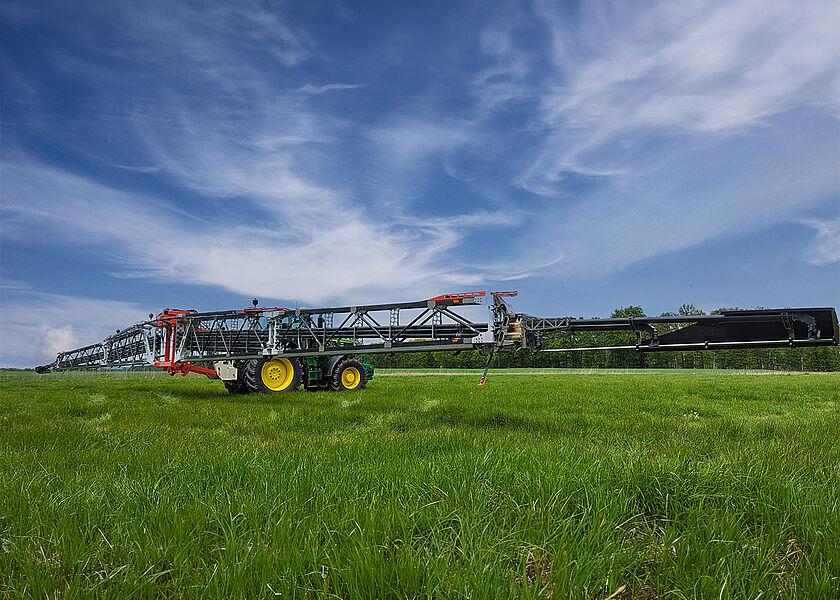
RAUCH receives the AVK Innovation Award 2024 in the "Innovative Products and Applications" category
RAUCH Landmaschinenfabrik GmbH has once again proven its title as an innovator and fertiliser technology specialist by receiving the prestigious AVK Innovation Award 2024 in the "Innovative Products and Applications" category. Together with its partners Thoenes GmbH and the Institute for Lightweight Construction and Plastics Technology (ILK) at the Technical University of Dresden, a lightweight fertiliser spreader boom with thermoplastic carbon-PA6 hollow profiles was developed. This advance in the use of materials and truss design is regarded as a key technology in agricultural engineering and overcomes limits in working width. Soil compaction and erosion caused by industrial agriculture pose huge challenges that have a significant impact on agriculture and the environment. These problems lead to several negative consequences: 1. Reduced growing conditions and lower yields: Soil compaction affects the pore structure of the soil, making it more difficult for plants to absorb water and nutrients. This leads to poorer growing conditions and ultimately to lower crop yields. 2. Increased effort in soil cultivation: compacted soils are more difficult to cultivate, which increases the energy and time required for agricultural activities such as ploughing, sowing and harvesting. This can significantly increase production costs. 3. Increased methane and nitrous oxide production: Compacted soils tend to favour anaerobic conditions, which increases the production of greenhouse gases such as methane and nitrous oxide. These gases contribute significantly to climate change and pose an additional environmental problem. As part of the Le²Gro project, the partners have set themselves several key goals to significantly improve sustainability and efficiency in the production and utilisation of materials. 1. Reduction of energy consumption: A key objective of the project is to minimise energy consumption in all production and manufacturing processes. This is to be achieved through the use of energy-efficient technologies, the optimisation of production processes and the implementation of renewable energy sources. Reducing energy consumption not only helps to cut production costs, but also to reduce CO₂ emissions and thus protect the climate. 2. Reduction of raw materials: The project aims to minimise the use of raw materials without compromising the quality and functionality of the end products. By improving material efficiency, optimising product design and implementing modern production processes, fewer resources are to be consumed. This leads to a reduction in the ecological footprint and conserves natural resources.
3. Recyclability of base materials: Another key objective is to improve the recyclability of the base materials used. This includes the development and use of materials that can be easily recycled or reused at the end of their service life. This not only reduces waste, but also minimises the need for new raw materials. High recyclability supports the circular economy and makes a significant contribution to conserving resources and avoiding waste. "In agricultural engineering, lightweight construction will be a key technology for machines with booms, such as the pneumatic spreaders from RAUCH. In order to meet today's requirements for greater working widths and weight reduction, new technologies must be integrated to increase productivity and reduce energy consumption," says Volker Stöcklin, Managing Director and Head of Development at RAUCH Landmaschinenfabrik GmbH. The results of the project are impressive and demonstrate the successful realisation of the goals set. One significant success of the project is the drastic reduction in the weight of the developed products. Through innovative material selection and combinations as well as optimised design strategies, the weight of the components was reduced by 43%, which is an outstanding result. Another significant result of the project is the development of a new type of truss structure based on braid-orientated thermoplastic materials. This structure combines the advantages of lightweight construction and high stability and opens up a wide range of possible applications in various industries. The use of thermoplastic materials also enables improved recyclability, which contributes to achieving the project's sustainability goals.
